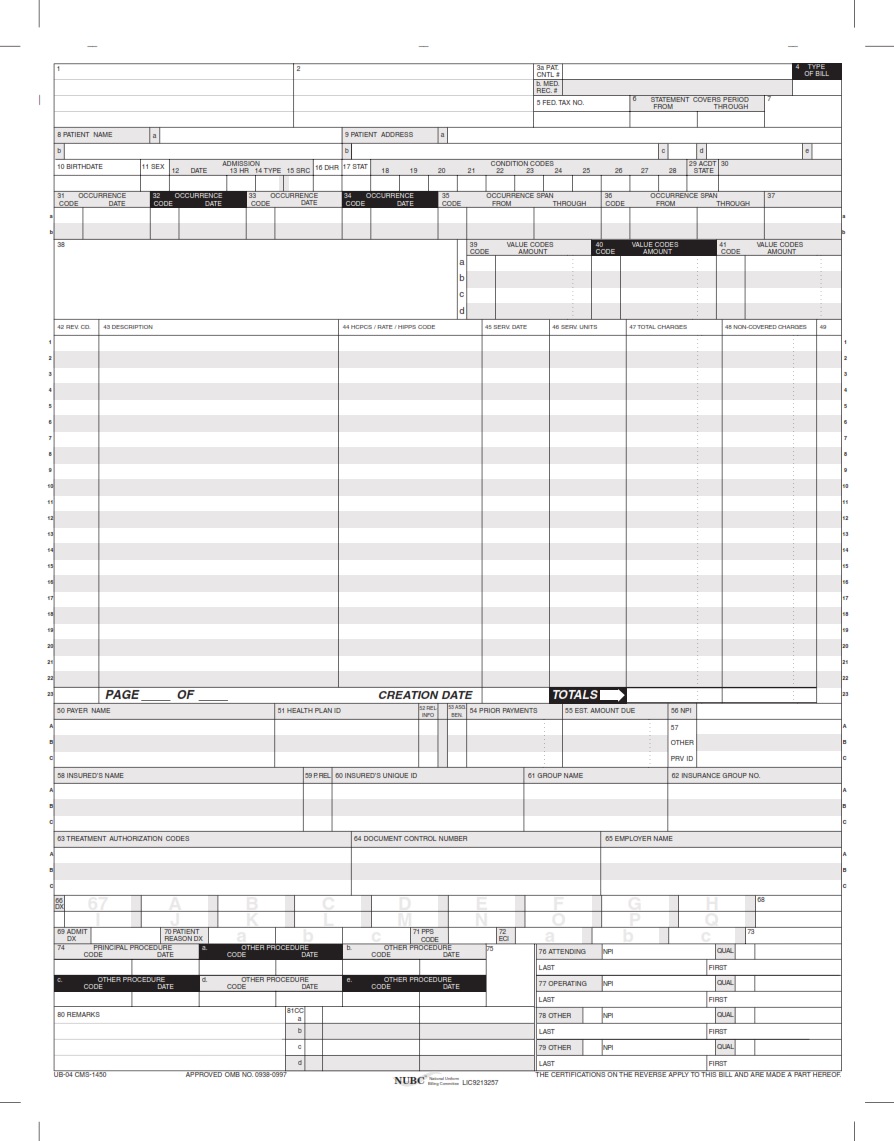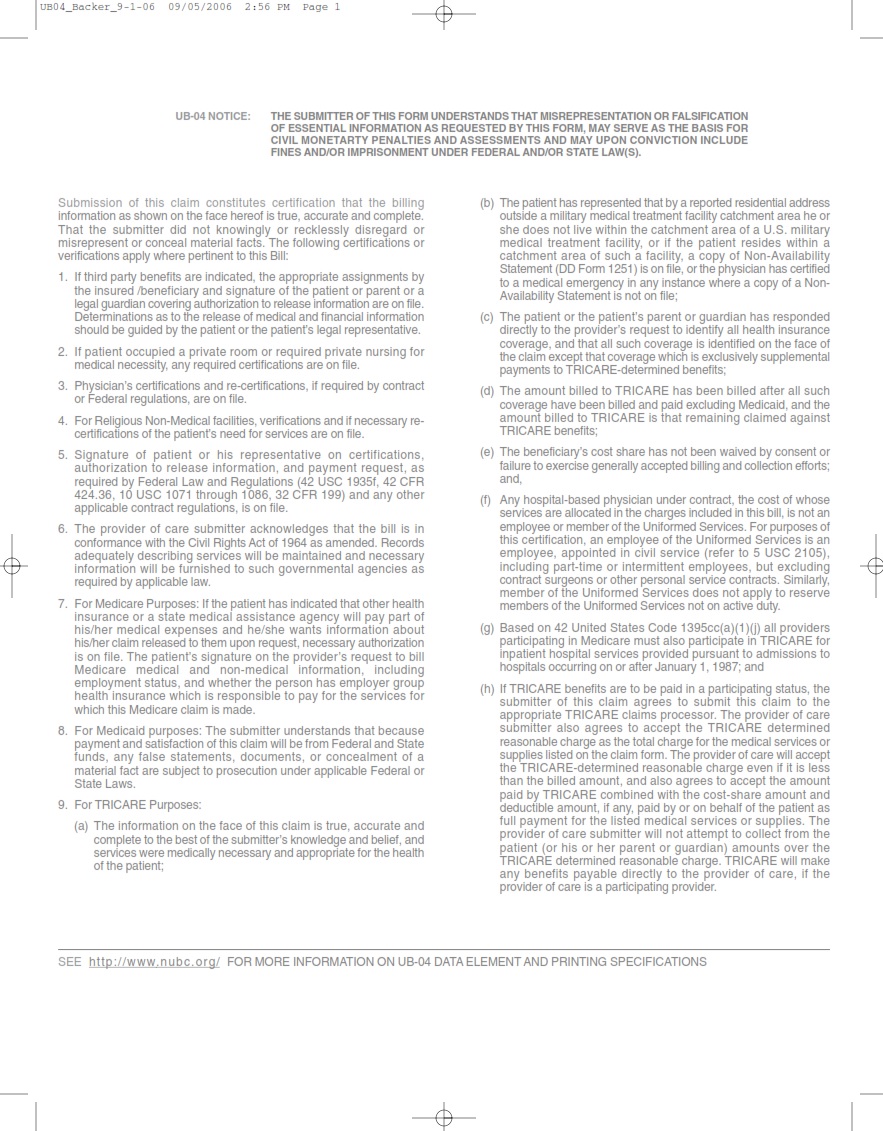CMSFORM.ORG – CMS 1450 – UB-04 Uniform Bill – In the intricate world of healthcare billing, the CMS 1450 – UB-04 Uniform Bill stands as a beacon of standardized documentation and efficiency. This universally recognized form serves as the backbone of hospital billing practices, encapsulating vital patient information in a concise and structured format. Imagine a document that not only tells the story of a patient’s medical journey but also unlocks the financial intricacies of their care. From complex procedures to routine check-ups, each line on the UB-04 bill weaves together a narrative that transcends mere numbers and codes. Join us as we delve into the fascinating realm of healthcare billing and uncover how this seemingly mundane form plays a pivotal role in shaping our understanding of medical costs and services.
Download CMS 1450 – UB-04 Uniform Bill
| Form Number | CMS 1450 |
| Form Title | UB-04 Uniform Bill |
| Published | 2007-03-01 |
| O.M.B. | 0938-0997 |
| File Size | 537 KB |
CMS 1450 - UB-04 Uniform Bill (712 downloads )
What is a CMS 1450?
A CMS 1450 form, also known as the UB-04 Uniform Bill, is a standardized medical billing form used by hospitals and healthcare facilities to submit claims for reimbursement. This form includes detailed information about the services provided to a patient, such as treatments, procedures, and medications. It serves as a crucial document in the healthcare industry, ensuring accurate billing and payment processing.
One key feature of the CMS 1450 form is its ability to accommodate various types of services and treatments offered by different healthcare providers. This flexibility allows for comprehensive documentation of patient care, leading to more efficient billing processes and improved communication between providers and insurance companies. Understanding how to properly complete a CMS 1450 form is essential for healthcare professionals to ensure prompt reimbursement and maintain compliance with billing regulations.
Where Can I Find a CMS 1450?
When searching for a CMS 1450 form, also known as the UB-04 Uniform Bill, there are various sources you can explore. One common avenue is through online medical supply stores that specialize in providing healthcare forms and documents. These stores often have a range of CMS forms available for purchase, including the CMS 1450.
Another option is to contact your local hospital or healthcare provider’s billing department. They may be able to provide you with a copy of the form or direct you to where you can obtain one. Additionally, government websites such as the Centers for Medicare & Medicaid Services (CMS) may offer digital versions of the CMS 1450 form for download.
Overall, finding a CMS 1450 form can involve some research and effort but knowing where to look can streamline the process. Whether online or through healthcare facilities, these resources can help individuals access this essential billing document easily when needed.
CMS 1450 – UB-04 Uniform Bill
When it comes to healthcare billing, the CMS 1450 form, also known as the UB-04 Uniform Bill, plays a crucial role in streamlining documentation and reimbursement processes. This standardized form is used by hospitals and other healthcare facilities to bill Medicare and Medicaid for services provided to patients. What sets the UB-04 apart is its detailed structure, which allows for clear itemization of services rendered and associated costs. By utilizing this form, providers can ensure accurate billing information is transmitted to payers, minimizing errors and speeding up the payment process.
One key advantage of the UB-04 form is its flexibility in accommodating various types of services and procedures. With designated fields for different aspects of care such as room and board charges, pharmacy services, surgical procedures, and more, providers can easily capture all relevant information on a single bill. This comprehensive approach not only simplifies billing but also helps in tracking patient care data for administrative purposes. Additionally, the UB-04’s standardized format promotes consistency across different healthcare settings, making it easier for payers to review claims efficiently and accurately.

